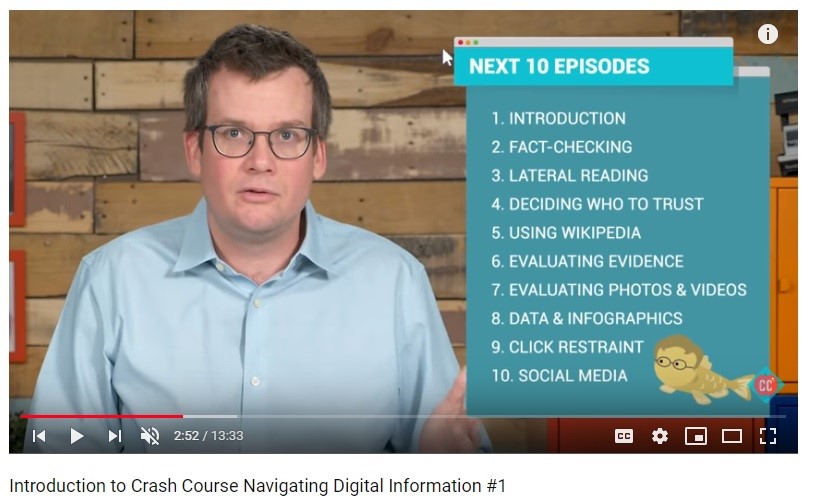- Home
- 21st Century Skills
- Navigating Digital Information: Developing 21st Century Skills to Evaluate Online Information
Navigating Digital Information: Developing 21st Century Skills to Evaluate Online Information
Michael Okamoto is a tenured lecturer at Shimane University in Japan. He specializes in language proficiency tests such as the TOEFL and TOEIC as well as 21st century skills.
E-mail: mjokamoto@gmail.com
21st century skills are designed to help support modern students’ comprehension of those necessary skills in a global society. These critical thinking skills are popular in both ESL and non-ESL classrooms alike. In the ESL classroom, students are often assigned topics to debate and discuss the Pros and Cons of a certain subject. This activity, though popular due to application of critical thinking and applied linguistics, in this authors opinion, provides students’ with an skewed understanding of what logical debate truly is. Teaching students 21st century skills in the ESL classroom, such as digital literacy, is essential for students to “to understand complex perspectives, use multiple media and technologies, and work creatively with others.” (Fadino, Y. 2013)
One area of study that has seen recent growth due to the growing influence of “fake news” is information literacy. According to google analytics, interest in “fake news” grew exponentially from June, 2018 (Google Trends). The ability to fact-check and determine whether something is accurate and reliable is clearly becoming more important in our ever connecting world. Although the idea of information literacy has long existed, it has often revolved around the ideas of debate, plagiarism, understanding reference use, as well as privacy protection. These topics are important but do not in fact prepare students to properly determine those more nuanced areas of bias and fact checking. Although limited language comprehension may affect the depth of study in this area, understanding the validity of data is a skill of ever-increasing importance is important in all levels of the ESL/EFL classroom.
Crash course, a popular channel on YouTube, has took upon themselves to address many of these issues in a new online course called “Navigating Digital Information”. This course provides a base platform of how to properly identify these areas so students can learn to “navigate the internet!”
According to the channel synopsis, the topics covered in this course include learning how to:
- Examine information using the same skills and questions as fact-checkers
- Read laterally to learn more about the authority and perspective of sources
- Evaluate different types of evidence, from videos to infographics
- Understand how search engines and social media feeds work
- Break bad internet habits like impatience and passivity, and build better ones
This video series provides students with a free online English resource that allows them to employ their English knowledge while developing an important life skill. All the videos have English subtitles as well as subtitles in other popular languages, making this series applicable in the ESL/EFL classroom as well.
Along with this resource, the initiative partnered with this series, MediaWise, (sheg.standford.edu) has a great selection of lessons and assessments based on history and civic online reasoning to help improve digital media literacy. Although not directly connected with the videos themselves, the topics covered in both sites are quite similar and allows students an opportunity to apply those skills that they acquired through the video course.
According to the website, these skills are necessary for students to succeed in life. "Our research has shown that students need help navigating the sea of digital information that they encounter every day. Our new work will support the creation of classroom-ready materials that will prepare students to confront the challenges of a digital society," says Wineburg, the Margaret Jacks Professor of Education.
This online curriculum has already been adopted by a number of school districts in the United States. I have had great experience with these materials in my own university ESL courses. By improving upon the typical “debate format” that students often encounter, students’ are able to possess a deeper understanding of logical thinking in context of digital literacy which in turn provides for a better language production. I feel that the pairing of the online assessments and materials paired with the Crash Course video series on digital information can help improve any ESL/EFL based classroom
References
Crash Course “Navigating Digital Information” https://www.youtube.com/playlist?list=PL8dPuuaLjXtN07XYqqWSKpPrtNDiCHTzU
(accessed 3/2019)
Fandiño, Y., 21st Century Skills and the English Foreign Language Classroom: A Call for More Awareness in Colombia, Gist Education and Learning Research Journal, No. 7, November 2013. pp. 190-208
Google Trends, https://trends.google.com/trends/explore?date=all_2008&gprop=news&q=fake%20news (accessed 3/2019)
Stanford History Education Group, 2019, Stanford University https://sheg.stanford.edu/, (accessed 3/2019)
Please check the Practical uses of Technology in the English Classroom course at Pilgrims website.
Please check the Creative Methodology for Using ICT in the English Classroom course at Pilgrims website.
Strategies of Teaching Critical Thinking in the Young Learner Classroom
Hajni Fruttus, HungaryInjecting Values Education into the English Curriculum of Young Learners
Sophia E. Gegiou, Greece;Ellyze Francisco, Greece;Eugenia P. Iskos, GreeceNavigating Digital Information: Developing 21st Century Skills to Evaluate Online Information
Michael Okamoto, JapanWeb-conferencing: New Ways to Teach (English) in Hospital Schools
Tjaša Funa Štamfelj, SloveniaStudents’ Perceptions of Completing Practice and Production Tasks via a Learning Management System
Mary Jane Özkurkudis, Turkey
